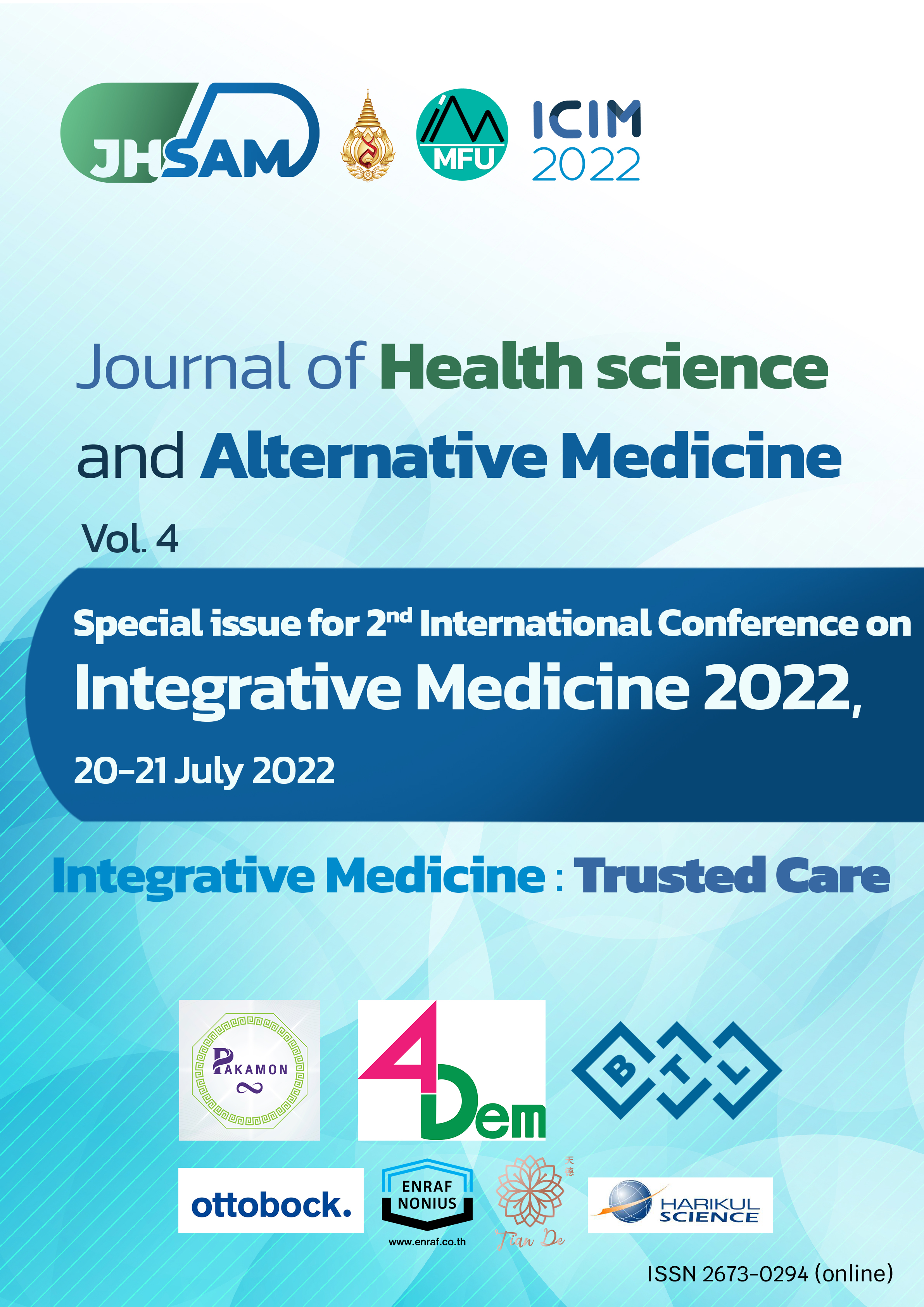A19. Discriminative Ability of the 7th Cervical Vertebral Wall Distance for Hyperkyphosis Measurement in Elderly
Main Article Content
Abstract
Introduction: Hyperkyphosis is an excessive thoracic spine curvature exceeding 40 degrees, which can lead to many adverse health and other health-related consequences. Currently, the 7th cervical vertebra wall distance (C7WD) is a practical, valid, and reliable measure to screen and monitor thoracic hyperkyphosis in the elderly. The C7WD is at least 7.5 cm. could indicate the risk of hyperkyphosis in elderly. However, there is no clear evidence to confirm the clinical utility of the measurement as a discriminative ability of the C7WD.
Objective: To investigate discriminative ability of hyperkyphosis severity using C7WD in the elderly
Methods: This study was conducted in 90 participants, aged at least 60 years from several communities who had different degrees of thoracic hyperkyphosis. All participants were assessed for their severity of thoracic hyperkyphosis using the C7WD and a lateral plain radiograph (Cobb’s method). Hyperkyphotic elderly was defined using Cobb angle of at least 40 degrees and C7WD of at least 7.5 cm.
Results: Participants were divided into 2 groups including normal group (C7WD less than 7.5 cm and hyperkyphosis group (C7WD at least 7.5 cm). The finding showed the significance difference of C7WD and Cobb angle between the normal (C7WD 3.57±2.59 cm, and Cobb angle 32.84±4.54) and hyperkyphosis group (C7WD 9.26±3.05 cm, and Cobb angle 46.13±5.15) (p<0.001).
Conclusion: The finding suggested that the C7WD was a simple method for hyperkyphosis screening in which elderly with the C7WD at least 7.5 cm may be an initial hyperkyphosis.
Article Details

This work is licensed under a Creative Commons Attribution-NonCommercial-NoDerivatives 4.0 International License.
JHSAM publishes all articles in full open access, meaning unlimited use and reuse of articles with appropriate credit to the authors.
All our articles are published under a Creative Commons "CC-BY-NC-ND 4.0". License which permits use, distribution and reproduction in any medium,
provided that the original work is properly cited and is used for noncommercial purposes.
References
-

